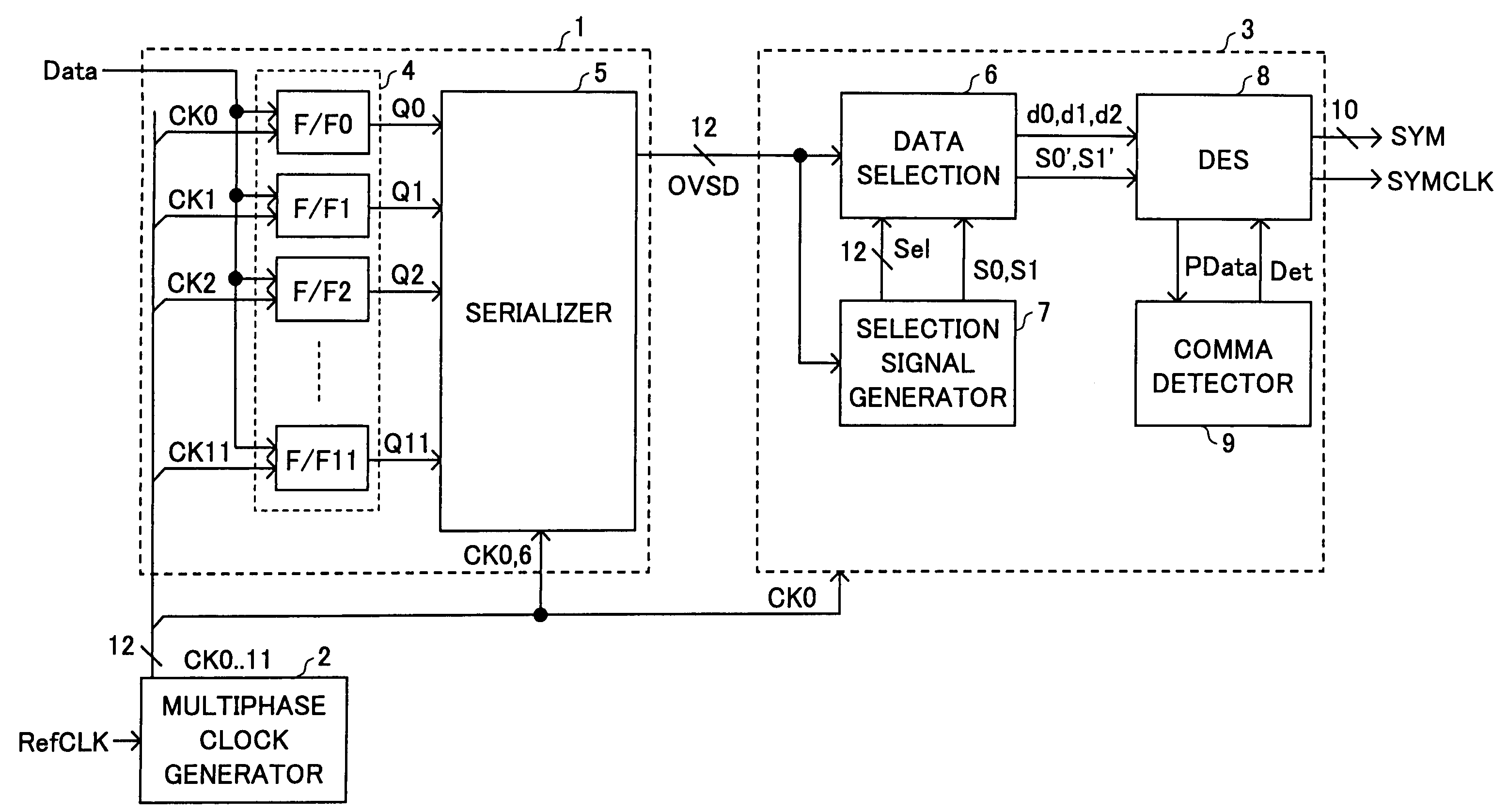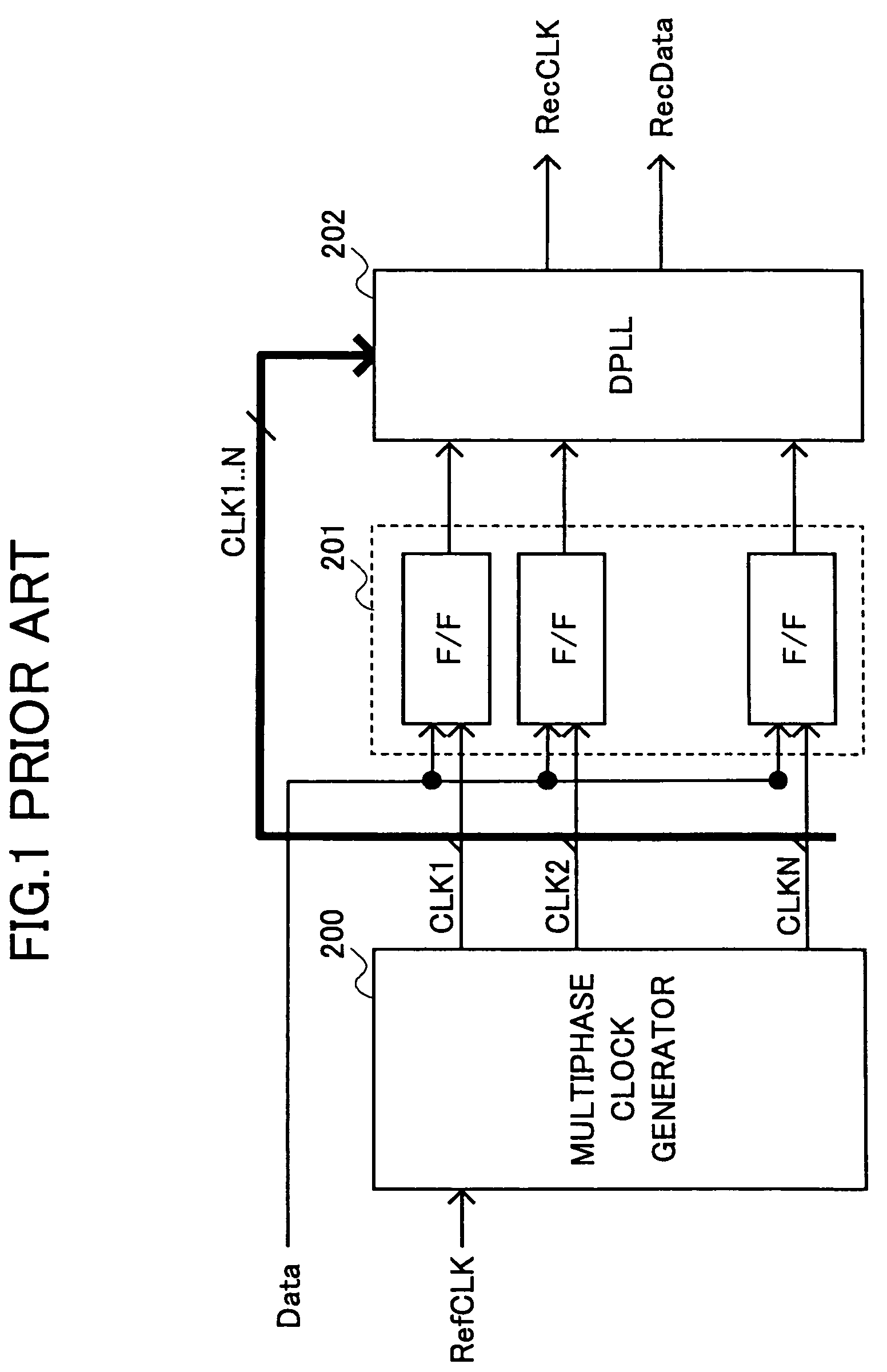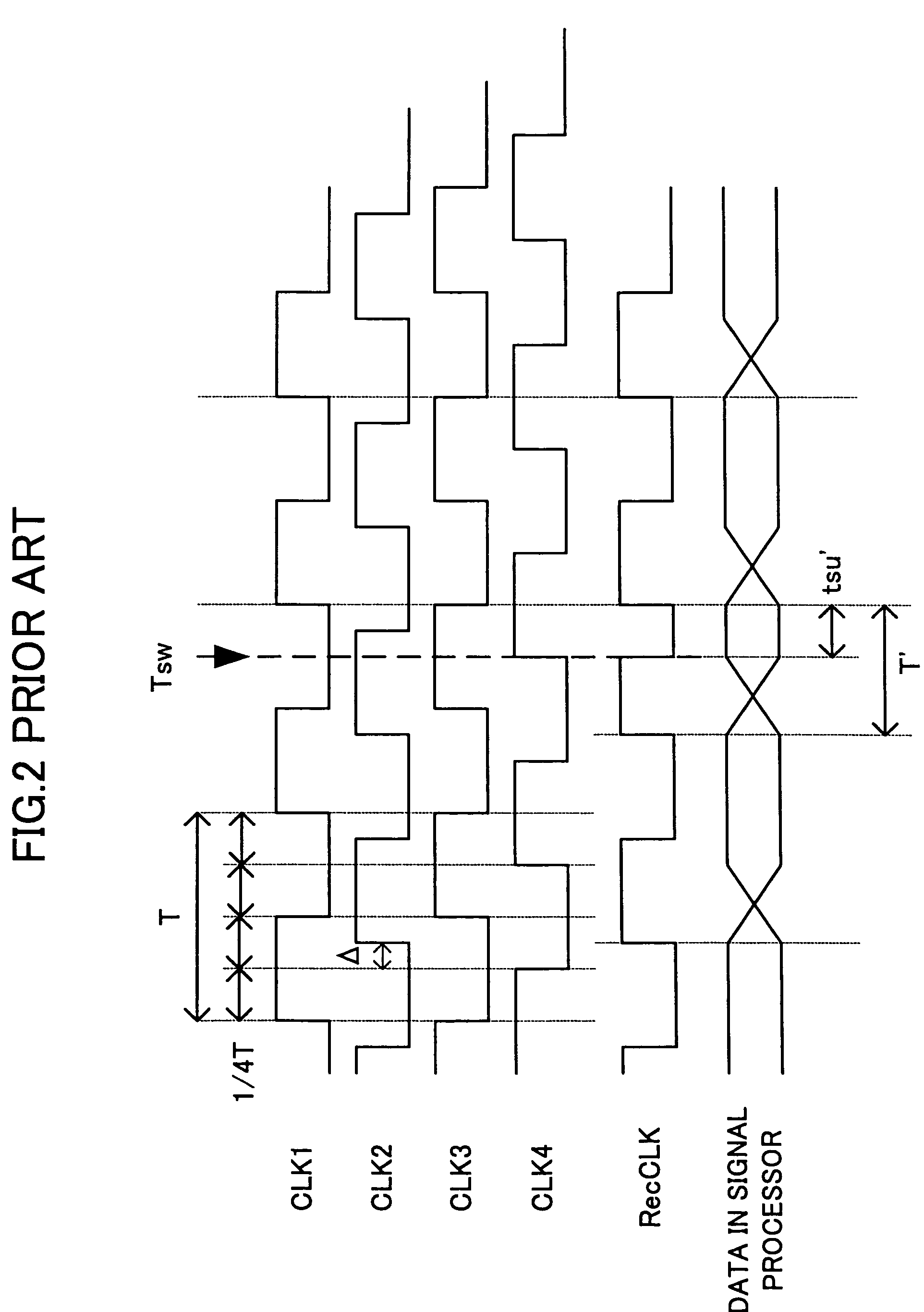Data recovery method and data recovery circuit
a data recovery and data technology, applied in the field of data recovery method and data recovery circuit, can solve the problems of increasing chip size, increasing power consumption, and cdr circuit incorporating such a high-frequency vco, and achieves the effect of accurate data recovery, preventing adverse effects of jitter, and easy data recovery process
- Summary
- Abstract
- Description
- Claims
- Application Information
AI Technical Summary
Benefits of technology
Problems solved by technology
Method used
Image
Examples
first embodiment
[0049]FIG. 3 is a schematic block diagram illustrating serial data transmission to which a data recovery circuit is applied according to the first embodiment of the invention.
[0050]The physical layer 100 includes a transmitter 101 for transmitting data and a receiver 102 for receiving data. Data are transmitted and received to and from another physical layer 120 having a pair of transmitter 122 and receiver 121, via transmission lines 106 and 107. The physical layer 100 has a PLL 113 for generating a clock of frequency f2 from a reference clock RefCLK 1. The physical layer 120 has a PLL 123 for generating a clock of frequency f1 from a reference clock RefCLK 2. The physical layers 100 and 120 operate at frequencies f2 and f1 produced by the PLLs 113 and 123, respectively. The pair of transmitter 101 and receiver 102, and the pair of transmitter 121 and receiver 122 are called ports. Serial data transmission is performed between the ports by point-to-point.
[0051]The transmission line...
second embodiment
[0152]The second embodiment of the present invention is now described. In the second embodiment, the selection signal generator 7 and the data selector 6 used in the symbol data restoration unit 3 of the first embodiment are modified, and the other structures are the same. Accordingly, explanation is made focusing on the selection signal generation and data selection.
[0153]FIG. 21 is a block diagram of the selection signal generator used in the data recovery circuit according to the second embodiment of the invention. In the selection signal generator shown in FIG. 21, signals output from the counter 61, the state controller 62, and the selection signal converter 63 are different from those illustrated in the first embodiment in FIG. 6. The other components, that is, the both edge detector 20, the comparator 21, the CKP converter 24, and the edge detector 25 are the same as those shown in the first embodiment. The same components with the same functions as those of the first embodim...
PUM
 Login to View More
Login to View More Abstract
Description
Claims
Application Information
 Login to View More
Login to View More - R&D
- Intellectual Property
- Life Sciences
- Materials
- Tech Scout
- Unparalleled Data Quality
- Higher Quality Content
- 60% Fewer Hallucinations
Browse by: Latest US Patents, China's latest patents, Technical Efficacy Thesaurus, Application Domain, Technology Topic, Popular Technical Reports.
© 2025 PatSnap. All rights reserved.Legal|Privacy policy|Modern Slavery Act Transparency Statement|Sitemap|About US| Contact US: help@patsnap.com



